8 Oct 2006: St Petersburg, Russia
Today is an exciting day for me. Even though I am standing in a two-hours queue, waiting patiently in the beeline to go into the Hermitage! The Hermitage Museum has a art and culture collection second in size only to that of the Louvre Museum in Paris. The collections occupy the six historic buildings along Palace Embankment, including the Winter Palance (a former residence of Russian emperors), the Menshikov Palace (the Museum of Porcelain) and the eastern wing of the General Staff Building. It was said that its collection is so large that it would take years to view the 3 million works on exhibits in its entirety!
At 3.20 pm, I finally entered into the museum, which means I had only less than 90 minutes to explore the treasures. Here was what I cherry-picked:
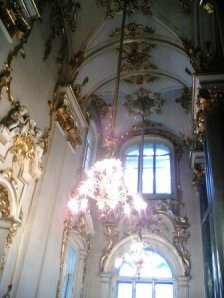

In the rooms on the first floor of the Old Hermitage featured the works of the Italian Renaissance artists, including Leonardo da Vinci (1452-159) or his school. Among da Vinci’s most famous works, you can find:

Madonna Litta (c. 1490); Oil on canvas (transferred from panel), 42 × 33 cm
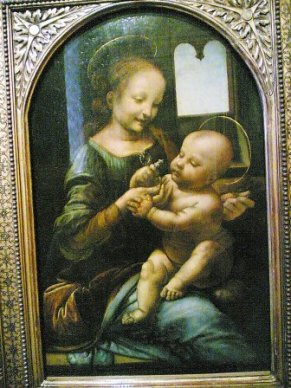
Benois Madonna (1478); Oil on canvas, 49.5 × 33 cm
The theme of “Madonna & Child” is so pervasive throughout the Renaissance era, I saw this Italian sculpture named “Madonna & Child”

Giampietrino (1508 — 1521) was a north Italian painter of the Lombard School and the Leonardo circle. This talented painter had several contributions substantially in the late style of Leonardo da Vinci. My favourite was “The Repentent Magdalene”

Repentant Mary Magdalene; Oil painting, 49x39 cm
Giulio Romano (c. 1499 – 1546) was an Italian painter and architect and notably a prominent pupil of Raphael. His stylistic deviations from Renaissance’s Classicism help define the 16th-century style known as Mannerism.

Due Amanti "Two Lovers" (1524)

The Return of the Prodigal Son (1669)
Peter Paul Rubens (1577 – 1640) was a prolific 17th-century Flemish Baroque painter with an exuberant style that emphasized movement, color, and sensuality. He is well-known for his Counter-Reformation altarpieces, portraits, landscapes, and history painting of mythological and allegorical subjects. My personal favourite is Roman Charity (or Carità Romana), based on a story of a daughter, Pero, who secretly breastfeeds her father, Cimon, after he is incarcerated and sentenced to death by starvation. She is found out by a jailer, but her act of selflessness impresses officials and wins her father’s release.
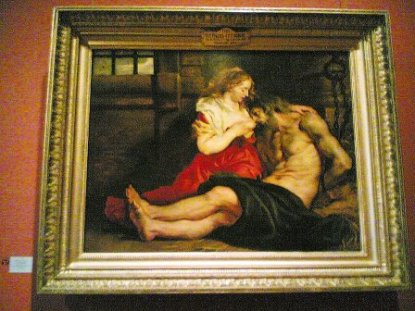
Carità Romana "Roman Charity" (1630)
The second floor of the Winter Palace was only partially open to the public and featured French Neoclassical, Impressionist and post-Impressionist art. Guillaume Guillon Lethière (1760 – 1832) was one of the distinctive French Neoclassical painter, who painted in Rome for several years.

The Death of Cato of Utica (1795)
The works byRenoir, Monet, van Gogh and Gauguin were displayed in the southeastern corner. Claude Monet (1840 – 1926) was a founder of French Impressionist painting and in fact, the term “Impressionism” is derived from the title of his painting Impression, Sunrise.

Woman in a Garden (1867)
Of course, I could not afford to miss out any of my favourite artist’s work. Vincent van Gogh (1853 – 1890) was a Dutch Post-Impressionist artist. He started his works with most painting in sombre colours until he encountered Impressionism and Neo-Impressionism in Paris. After incorporating their brighter colours and style of painting, he developed his unique recognizable style during the time he spent at Arles, France. In his decade of career, he produced more than 2,000 works, including around 900 paintings and 1,100 drawings and sketches. Most of his best-known works were produced in the final two years of his life, during which time he suffered recurrent bouts of mental illness, which led to his suicide. Here, I saw several originals of his relatively unknown works:

Lillac Bush (1889); oil on canvas, 72 x 92 cm

Thatched Cottages (1890); oil on canvas, 60 X73 cm
At the southern side of the second floor housed the Modern Art, displayed, featuring Matisse, Derain, Picasso and Kandinsky. Pablo Picasso (1881 – 1973) was a Spanish painter and sculptor. He is best known for co-founding the Cubist movement and for the wide variety of styles embodied in his work.

Woman with a Fan (1907)
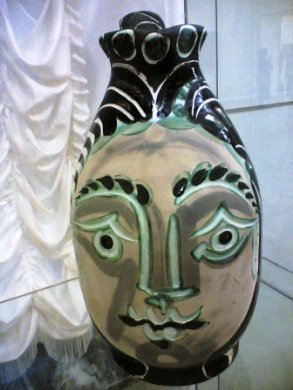
Ceramic
Henri Matisse (1869 – 1954) was a French artist, well known for his use of colour and his fluid, brilliant and original draughtsmanship. He was initially labeled as a “Fauve” (wild beast) but started classical, French painting in the later of his years. His mastery of the expressive language of colour and drawing, displayed in a body of work spanning over a half-century, won him recognition as a leading figure in Modern Art.

The Conversation (1911)

The Dessert: Harmony in Red (1908)
The museum visit would not be complete without appreciating the great works of Rodin. Auguste Rodin (1840 – 1917) was a French artist and most famous as a sculptor. This french sculptor remains as one of the few sculptors widely recognized outside the visual arts community.

The Age of Bronze (1877)

The Eternal Spring
Aimé-Jules Dalou (1838 – 1902) was a French sculptor and widely recognized as one of the most brilliant virtuosos of 19th-century France, admired for his perceptiveness, execution, and unpretentious realism. Dalou had a strong influence on Rodin’s works.
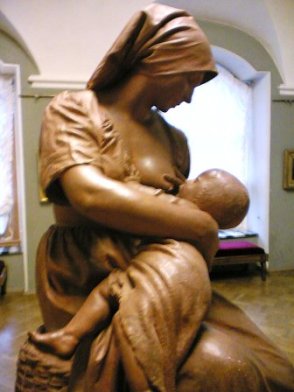
Peasant Woman with her Child (1873)
After covering the “essentials”, I turned my attention to the other great works. Here were some works which caught my attention, I slowed down, stopped and took time to admire the mastery.

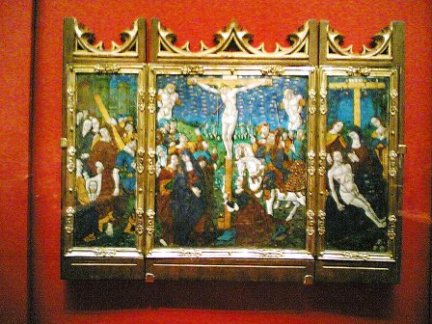


I ended the tour at Pavilion Hall, admiring James Cox’s Peacock Clock. The Peacock Clock was a present from Grigori Alexandrovich Potemkin to Catherine the Great. It is the only large 18th-century automaton in the world to still be functioning in its original unaltered condition.
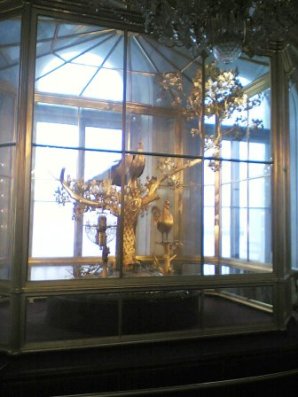
Peacock Clock (1762-1772)
My tour ended here as my clock ticked at 5 pm. Feeling I had left with many stones unturned, I wondered this would be a “trip of my life” or maybe someday I will be back to discover more.